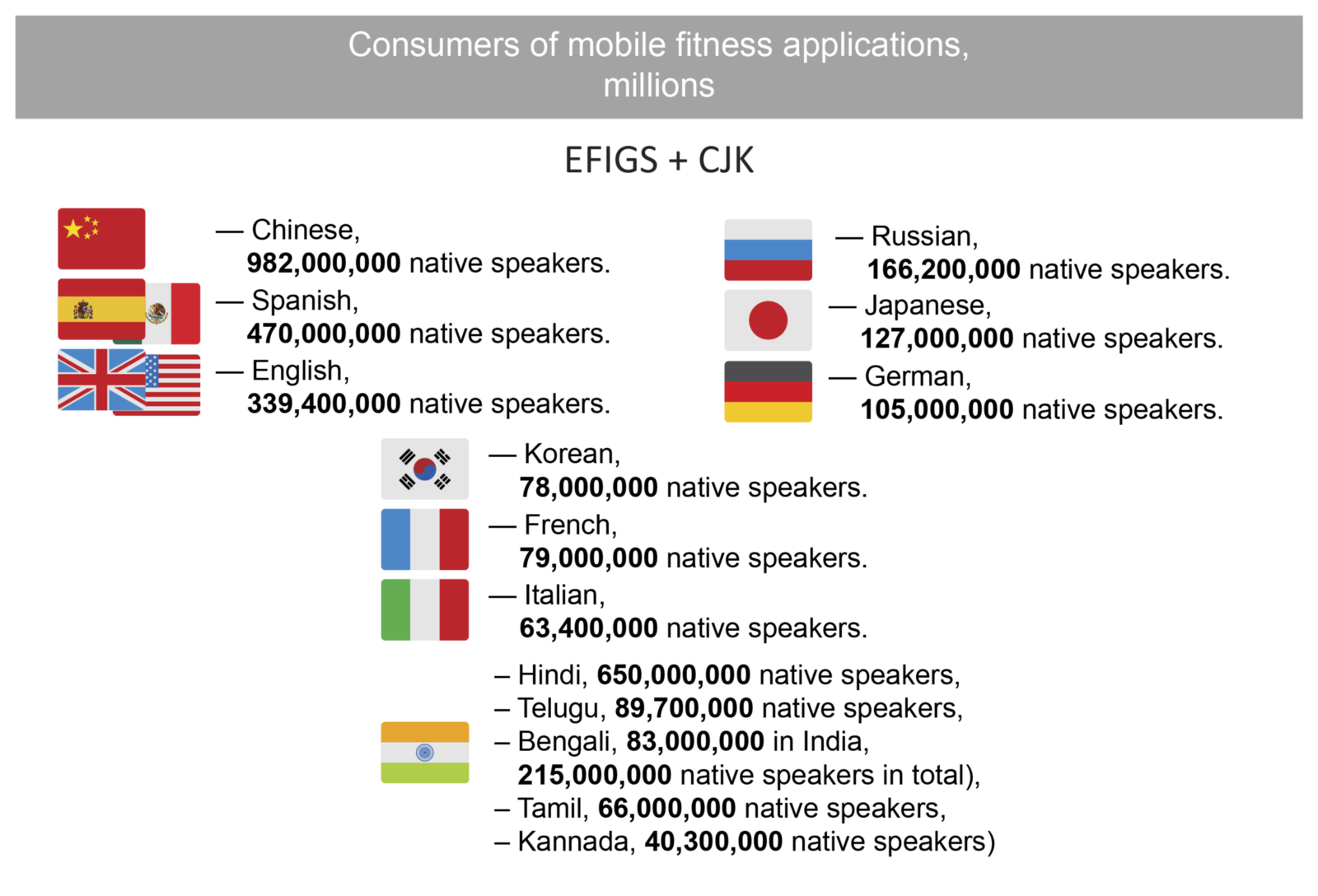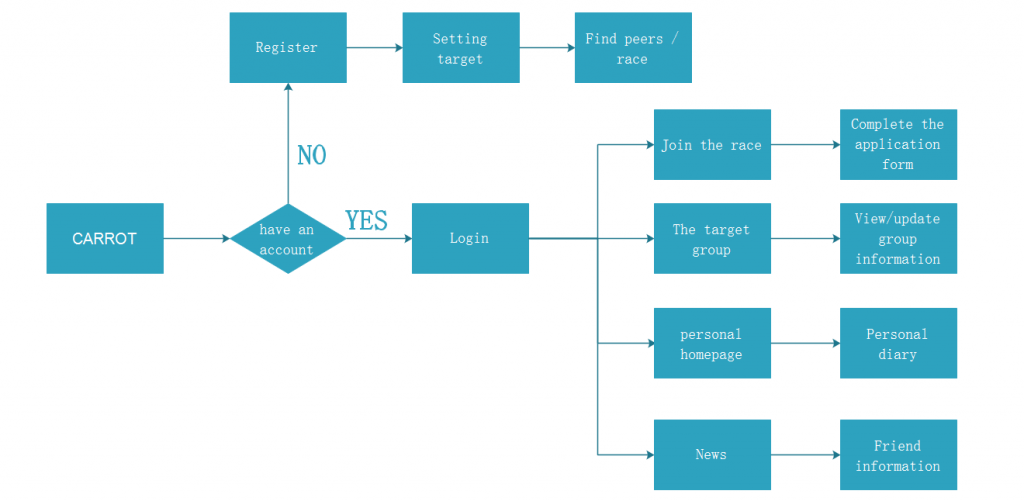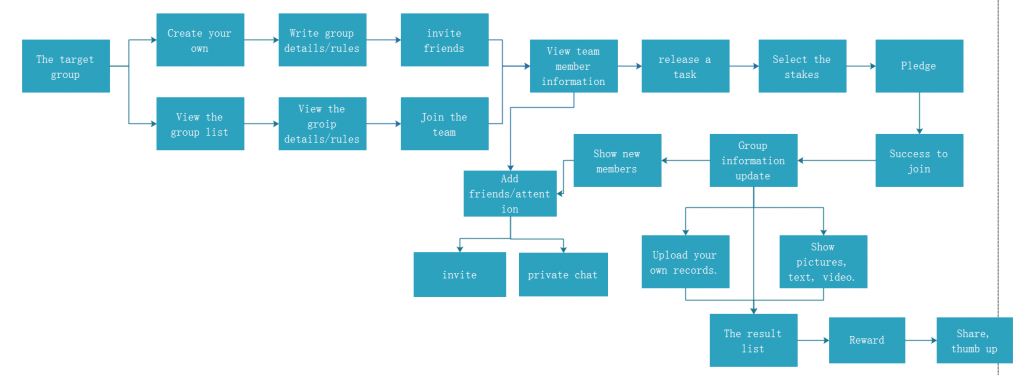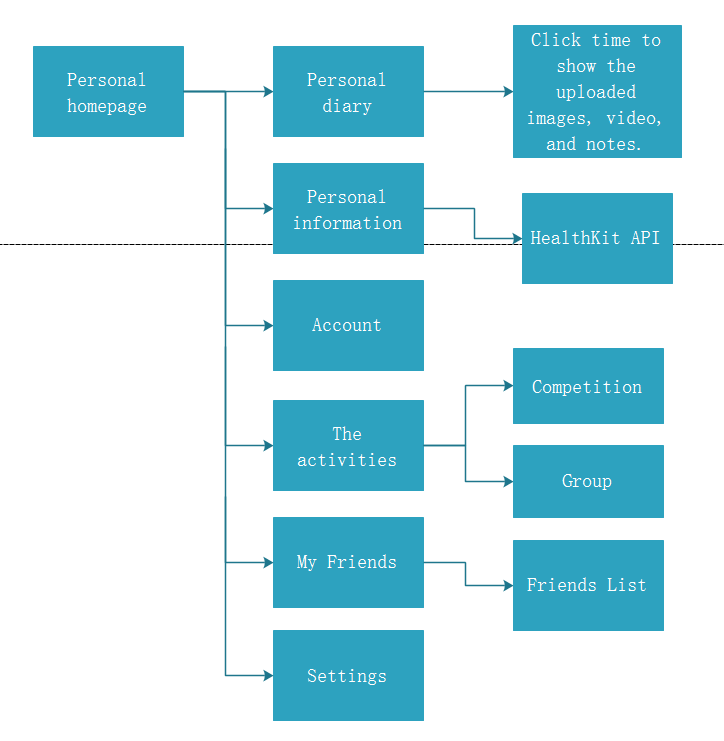1.Market analysis
- Increasing market size and value
According to Statista, the volume of the mobile fitness app market was $1.778bn in 2016, and it is expected to grow to $4.1bn in 2021. Thus, according to App Annie, the percentage of fitness apps in revenue was about 15% in 2016, and the share will be approximately 12% in 2021, which is not insignificant. Technavio’s market research report predicts that the global fitness app market will grow at a CAGR (Compound Annual Growth Rate) of above 29% during the forecast period.


- Fierce competition in fitness application market.
The competition in the global fitness app market is higher with over 100,000 apps dedicated to mobile health, and the global fitness app market is largely driven by a blend of global economic momentum, sporting mega-events, and rising focus on healthcare.Key vendors in the market are:
Azumio, Fitbit, Jawbone, FitnessKeeper, Under Armour
Other prominent vendors include Adidas, Daily Workouts Apps, Fooducate, Google, My Diet Coach, Nike, Noom, Polar Electro, Runtastic, Samsung Electronics, Sports Tracking Technologies, and Wahoo Fitness.
- Manufacturers of smart wearable devices participation
Here are several famous profitable fitness apps

All of them are manufacturers of connected shoes, watches, bracelets, trackers or smart clothes. They have their application as well. These companies always have enough cash flow and lots of loyal customers to their brand. As a result, they have innate advantages compared to others. Despite the fact that manufacturers of wearable devices in volume than the fitness apps market, the pure fitness application is growing faster and is projected to catch up with the physical devices market in 2021. It means that non-manufacturers participators have many opportunities as well, but they should find a unique development path rather than compete with these companies face to face.
2. Market positioning
Fitness application is a large market, it’s segmented market include sleep tracking, sports tracking, nutrition recommendations, weight loss, home meditation, etc. Our application aims to encourage people to keep exercising. So it is in sports tracking segmented market. And based on data collected from users’ devices, our platform could offer the personalized suggestions about nutrition and training to users as well.
Our targeting users are people who want to keep fit but do not have strong enough perseverance. It is also designed for sports enthusiasts who what to find a kindred spirit.
Our business will start from the UK, and then the English-speaking world and then Europe, and the whole world. But we should make it clear that seeking healthy lifestyle is a fashion in developed countries, so our targeting market is these countries and individuals have demand for keeping fitness by doing sports.
3. Competitors Analysis
There are several similar sports tracking apps (are Nike+, Runkeeper, Garmin, Run with Map My Run, Endomondo, Cadence Trainer, Runtastic, miCoach, Codoon and Sports Tracker). Their products have similar design and functions.
- Most of these apps allow multi-system and various brand wearable devices access. Some only allow Apple devices.
- Most are designed for both amateur and professional participators.
- Online community and offline sports competitions. People could join some online groups or clubs to train and race. People could also join offline challenges.
- Activities mainly include running, bicycling, swimming, etc.
- Some have reward function(usually sponsored by sports company) but no charge for users.
- The similar track, record, and analysis function
- The record could be shared to third-party social media or in the app
- Advising, online store, and membership subscription are main profits model.
Our application will have these functions as well, but its most obvious feature is “carrot and stick” model. The reward and punishment model make it different from other application, its a new try to motivate people to keep exercising and have a healthy lifestyle.
4. Social / Ethical considerations
- Social and cultural trend
There is a trend that people are more and more taking care of their health. However, people are easy to give up and keeping exercising is a hard thing. Competition on social media could be used to motivate people to do sports. Reward and punishment model contribute to solving this problem.
Reward and punishment function, to some extent, might be regarded as lottery business by some people. Actually, according to related Act, it is not gamble. But since it is revolved in reward and loss of money, We should also set necessary rules about pledge limit and reward distribution, it should be fair and reasonable to make sure people’s attraction is doing sports for health rather than money.
The healthy industry is with huge development potential in the big-data era, so data collected from wearable devices or other smart devices is important and has potential commercial value. As a result, it might be sold to healthy institutions or used by themselves without individuals’ permission. So related laws or regulation should be made to protect people’s privacy. Necessary technologies should also be used to protect users’ interest.











